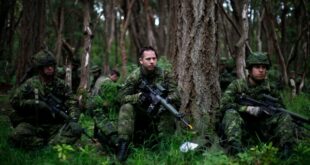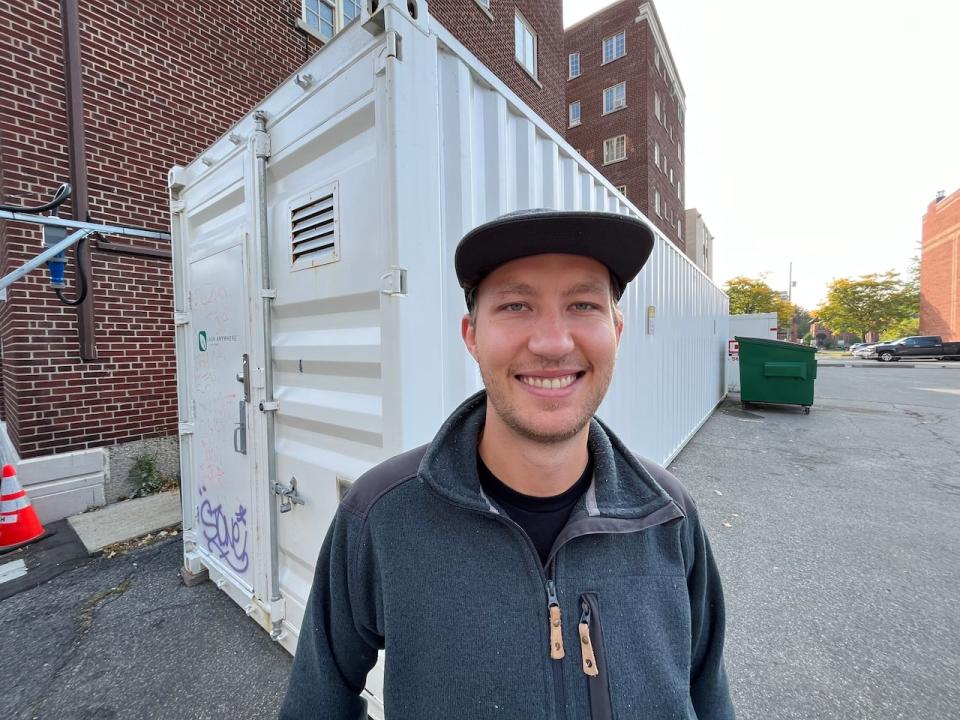 On the outside, the 40-foot solid steel box sitting in a downtown parking lot might look like any regular shipping container.
On the outside, the 40-foot solid steel box sitting in a downtown parking lot might look like any regular shipping container.
But on the inside, it’s home to hundreds of growing mushrooms.
The container is where Kanata-based company Heartee Foods grows gourmet mushroom varieties before delivering them to local restaurants. Alongside its Ottawa locations, the company has expanded to Toronto, Kingston, Ont., and Austin, Texas.
“We upcycle shipping containers that had a couple of trips across the ocean. We insulate them, we outfit them with HVAC systems, we build interior grow room walls and set up all the equipment we need to grow mushrooms,” said Dylan Mitchell, a farm operator with Heartee Foods.
Inside the humid shipping container in Centretown, Mitchell is growing six varieties of gourmet mushrooms. That includes four kinds of oyster mushrooms — yellow, pink, blue and king oyster — as well as chestnut mushrooms.
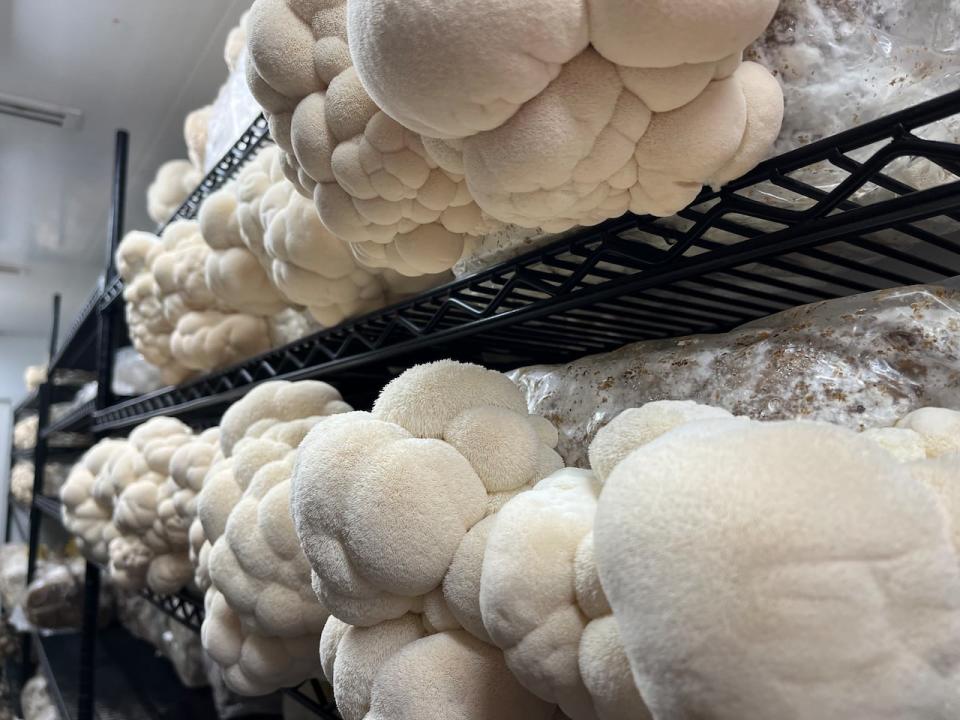 These lion’s mane mushrooms growing inside the Centretown shipping container are one of its most popular varieties. (Hallie Cotman/CBC)
These lion’s mane mushrooms growing inside the Centretown shipping container are one of its most popular varieties. (Hallie Cotman/CBC)
But Mitchell’s personal favourite is the lion’s mane mushroom, known for its recognizable spongy texture.
“It’s extremely meaty, extremely versatile. It’s going to soak up anything,” said Mitchell, adding it can be the centerpiece of a vegan or vegetarian dish.
One restaurant the mushrooms get delivered to is Arlo in Centretown, where grilled lion’s mane “steak” is offered on the menu.
“It’s now become one of their most popular dishes,” Mitchell said.
How it works
The mushrooms are grown in what’s called a spawn bag, made of a heat-proof plastic bag with an air filter on it. The bags are filled with Canadian sawdust and soybean husk, where the mushroom mycelium will colonize.
“Once the mycelium is colonized, you cut it open,” Mitchell said. “Once the bag starts getting oxygen, we’ll see mushrooms pinning off the cuts that we made in the bags.”
The farm runs what’s called a hub and spoke model, he added.
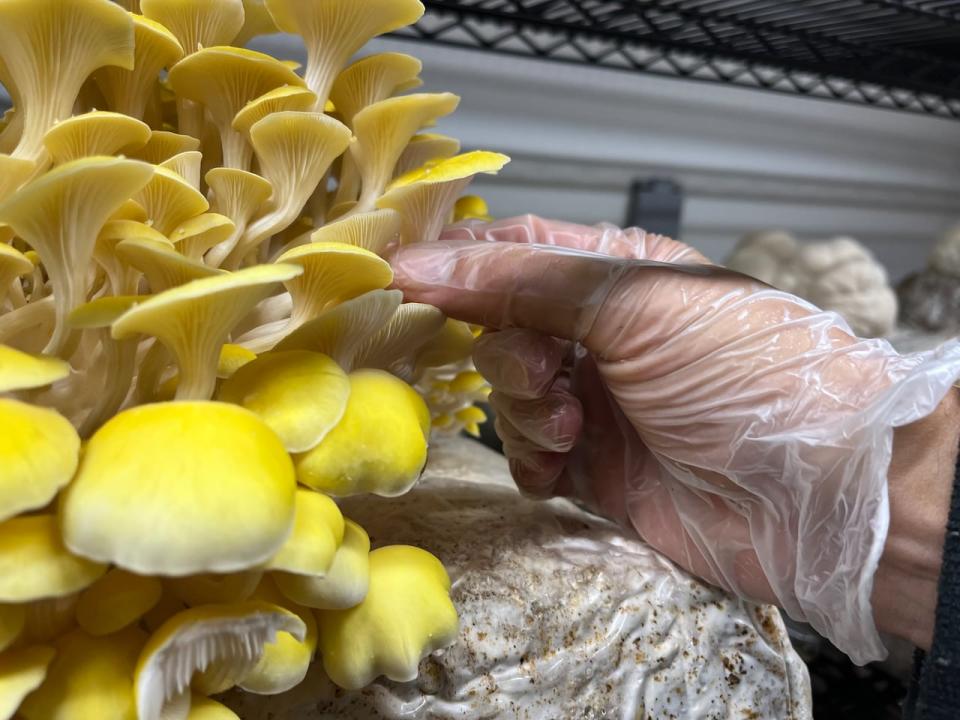 Yellow oyster mushrooms like these are among the four kinds of oyster mushrooms grown inside the shipping container. Blue, pink and king oyster mushrooms are also grown. (Hallie Cotnam/CBC)
Yellow oyster mushrooms like these are among the four kinds of oyster mushrooms grown inside the shipping container. Blue, pink and king oyster mushrooms are also grown. (Hallie Cotnam/CBC)
“Basically all the complicated stuff that needs to be done in an extremely sterile environment is done off site at our central hub just outside Kingston,” he said. “Those blocks are then delivered weekly to our satellite farms where they’re cut open and fruited.”
The process is simpler than alternatives, and allows them to grow the mushrooms closer to where they’re being sold.
Growing mushrooms offers opportunities
Mitchell’s background is in cannabis production, but he said many of the farming essentials are the same.
“You know, I’m not up at the crack of dawn shoveling manure every day. But this is still farming,” he said. “It’s labour intensive. You’re still growing a crop. You still need to care and nurture for a living thing.”
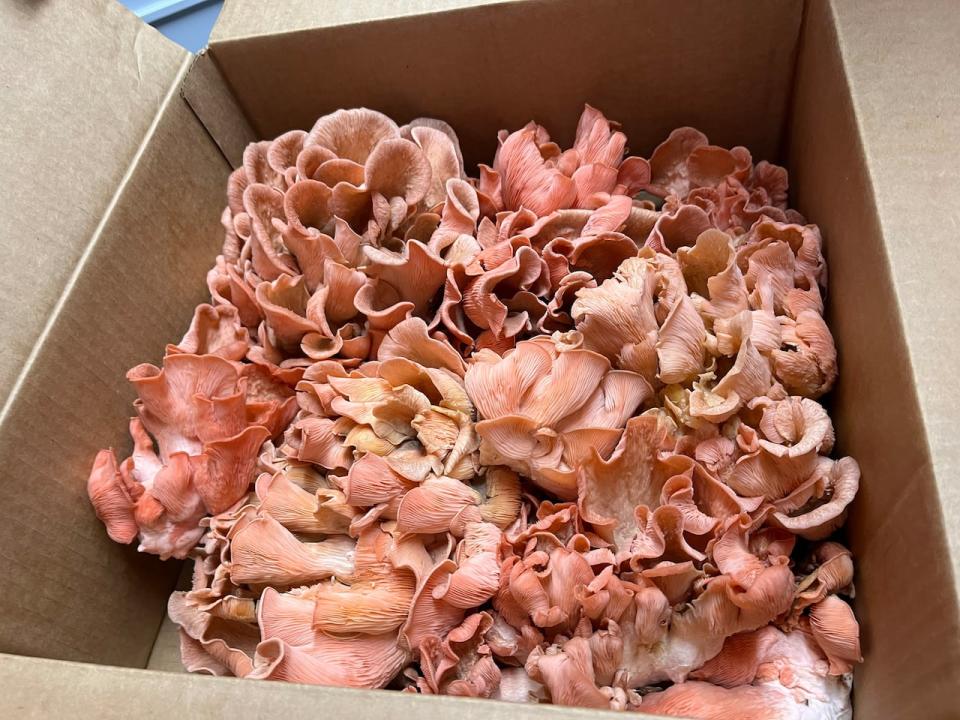
A box of pink oyster mushrooms, harvested and ready to be delivered. Mitchell says these mushrooms have a meaty taste, a bit like bacon or ham. (Hallie Cotnam/CBC)
Eventually, Mitchell said the goal is to have these shipping containers in Canada’s North, or other locations where some types of food are difficult to grow.
“We want to go down into the Caribbean, the Bahamas, all these food deserts where you just can’t grow certain crops,” he said.
Mushrooms are “low input” compared to lettuce or other leafy vegetables, he added.
“They pretty much just grow themselves,’ he said. “Which is awesome.”
*****
Credit belongs to : ca.news.yahoo.com
 Atin Ito First Filipino Community Newspaper in Ontario
Atin Ito First Filipino Community Newspaper in Ontario


